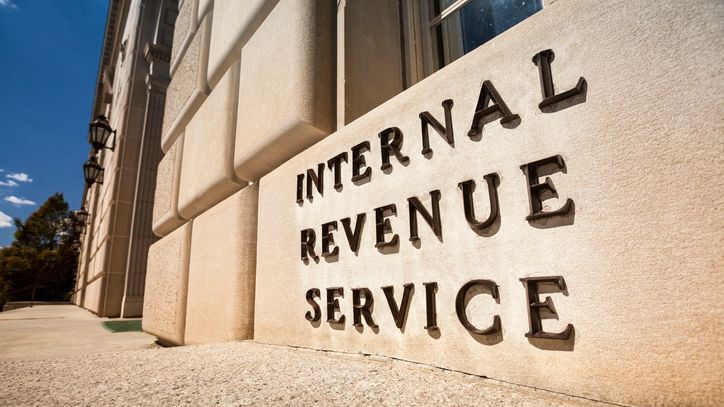The IRS imposes a tax underpayment penalty when taxpayers fail to pay enough of their tax liability during the year. This penalty applies if you don’t meet your obligations through withholding, estimated payments or a combination of both. And when it comes to your financial planning, it’s important to take into account how tax payments may affect your situation. A financial advisor can help you manage your payments effectively and reduce the risk of facing underpayment penalties.
What Is the Tax Underpayment Penalty?
The IRS defines a tax underpayment penalty as a charge imposed on taxpayers who fall short of paying their total estimated income tax for the year. That can be either through withholding or by making estimated tax payments.
For example, consider an independent contractor who underestimates their earnings for the year, leading to insufficient quarterly estimated tax payments. Or a full-time employee who fails to adjust their tax withholdings after a raise. As such, they may not be paying enough in taxes throughout the year. Such discrepancies could result in a penalty at the end of the year, which could add to their tax liability.
This penalty specifically applies when the total tax payments made during the year fall short of either 90% of the current year’s tax that’s owed or 100% of the previous year’s tax. For those earning a high income, this minimum required payment increases to 110% of the prior year’s tax.
How Is the Penalty Calculated?
The IRS imposes tax underpayment penalties under Section 6654 of the Internal Revenue Code. This penalty applies when a taxpayer fails to pay sufficient estimated taxes by their due dates. The penalty amount depends on how much you underpaid and how long the amount remained unpaid, along with an interest rate set by the IRS.
The IRS updates the interest rate each quarter. For individuals, it equals the federal short-term rate plus 3%. For corporations, the rate is the short-term rate plus 2%. As of the first quarter of 2025, the underpayment interest rate stands at 7% for individuals and 6% for corporations.
To calculate the penalty, the IRS multiplies the unpaid tax by the applicable interest rate, prorated for the period the payment is late — from the tax return’s due date until the date of payment.
As an example, suppose an individual owes $5,000, and the federal short-term rate is 5%. With the additional 3%, the effective rate becomes 8%. An annual penalty would be $400 (8% of $5,000). If the underpayment lasts six months, the penalty would be $200. While these amounts may appear minor, they can accumulate quickly and affect your finances. To avoid such penalties, it’s important to meet your tax obligations on time.
How to Avoid Underpayment Penalties

To help reduce the risk of underpayment penalties, you can use several strategies tailored to your financial situation. If you earn significant non-wage income — such as from self-employment, rental properties or investments — the IRS recommends making quarterly estimated tax payments. Spreading payments throughout the year can help prevent a large tax bill in April and ease potential financial stress.
Another effective approach is to increase your tax withholding by updating your W-4 form with your employer. This is especially useful if you have additional income that isn’t subject to withholding.
If your income varies throughout the year, the IRS allows you to make uneven estimated tax payments to match your earnings pattern. This can help you avoid penalties by aligning your payments more closely with when you actually receive income.
The best method for avoiding underpayment penalties depends on your income level and overall tax liability. Below are three common strategies to consider.
If You Make $150,000 or Less
For taxpayers earning $150,000 or less, there are specific guidelines to help avoid underpayment penalties. According to the IRS, you should strive to have your withholding cover at least 90% of the tax shown on your current year’s tax return or 100% of the tax shown on your previous year’s return. This approach can potentially help prevent a large balance due at tax time.
If You Make Over $150,000
For those with higher incomes, the guidelines differ slightly. Taxpayers with incomes over $150,000 must ensure their withholding and estimated tax payments cover at least 90% of their current tax year liability or 110% of their prior-year tax liability to potentially avoid underpayment penalties. This higher threshold reflects the larger tax liability typically associated with higher incomes.
Effective tax planning can serve as a helpful strategy for higher-income earners looking to potentially avoid underpayment penalties and manage their tax liability. Regular reviews of estimated tax payments and withholding may ensure you’re paying enough tax throughout the year. Furthermore, consulting with a tax professional or financial advisor can offer valuable guidance and help navigate complex tax laws and regulations.
If You Owe Less Than $1,000
Lastly, the IRS allows taxpayers to avoid underpayment penalties if they owe less than $1,000 in taxes after subtracting their withholding and refundable credits. This can provide relief to those who find themselves with a small balance due at tax time.
Bottom Line

Understanding tax underpayment penalties and their calculations is a vital aspect of managing one’s financial obligations. The IRS imposes these charges on taxpayers who fail to meet their tax responsibilities in a given year, and they apply to all income levels. The penalty is calculated based on the federal short-term rate plus 3%, compounded daily on the amount underpaid. This penalty can accrue interest over time, further increasing the financial burden. However, this can be mitigated through strategies such as making timely payments, increasing withholdings, and making estimated tax payments
Tax Season Tips
- Working with a financial advisor who offers tax services may be what you need to take control of your tax strategy. Finding a financial advisor doesn’t have to be hard. SmartAsset’s free tool matches you with up to three vetted financial advisors who serve your area, and you can have a free introductory call with your advisor matches to decide which one you feel is right for you. If you’re ready to find an advisor who can help you achieve your financial goals, get started now.
- You don’t have to wait until you file your taxes to get a sense of whether you’ll owe money or be receiving a refund this tax season. SmartAsset’s tax refund calculator can help you get a head start on your taxes this year. Meanwhile, our paycheck calculator comes in handy when estimating how much your take-home pay could be after receiving a raise.
Photo credit: ©iStock.com/Michail_Petrov-96, ©iStock.com/Pgiam, ©iStock.com/FG Trade Latin
